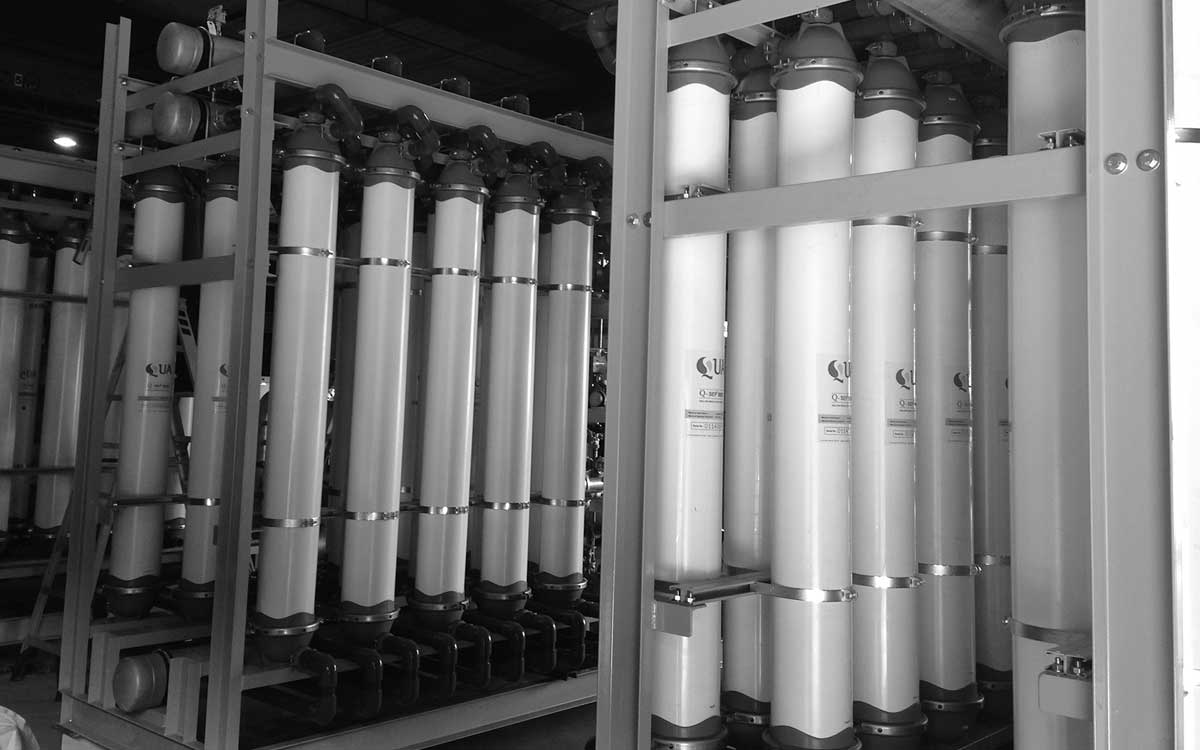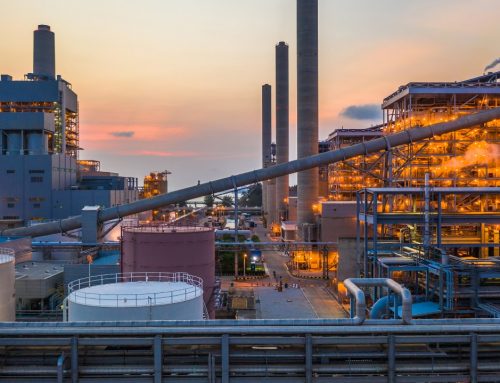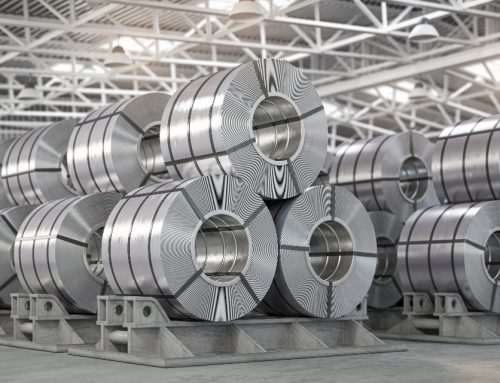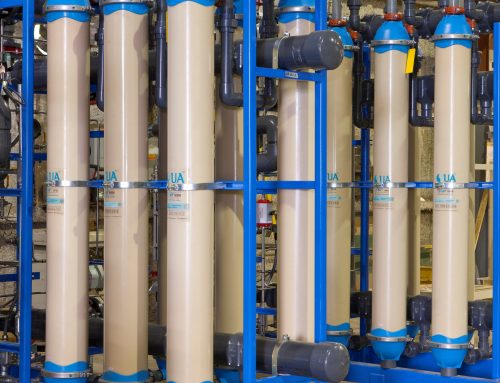Project Description
Background
The client is the largest cement company in India and amongst the leading producers of cement globally, providing a range of products that cater to the various aspects of construction, from foundation to finish. The company is also India’s largest exporter of cement.
The client’s captive power plant had a conventional ion exchange based demineralization system, which was used to produce demineralized water for their high pressure boiler application. Due to the scarcity of fresh water available in the region, the client decided to recycle the wastewater generated in the facility and reuse it for boiler makeup. This solution would also enable them to reduce their fresh water intake.
Combined influent from three wastewater sources were considered for recycle – boiler blow down, cooling tower make-up waste, and coal washer. All three of these streams were previously being discharged as wastewater.
The end user and the consultant evaluated various demineralization technologies to recycle and reuse the power plant waste. The available technologies are conventional pretreatment followed by ion-exchange based demineralization, reverse osmosis (RO) followed by mixed bed/electrodeionization and thermal evaporation.
Treating the wastewater through conventional pretreatment and demineralization has various operational and performance issues like resin fouling, frequent chemical cleaning resulting in additional downtime and waste generation.
The end user and consultant finally decided to go for a membrane-based scheme comprising of ultrafiltration and reverse osmosis process followed by fractional electrodeionization (FEDI) as they found it to be the most viable option in terms of higher reliability, lower capital expenditures and lower operational expenditure in comparison to other technologies.
RO has become most popular process for recycling and reuse of different types of wastewater. It typically removes 95-99% of dissolved impurities from the feed water. At the same time it is prone to scaling and fouling due to presence of certain feed contaminants. Fouling in RO membranes is due to presence of colloidal/suspended impurities, bacteria/viruses and oil and grease. The fouling of RO membranes due to colloids/suspended particles and oil and grease is generally irreversible and hence robust pretreatment of the wastewater is required to remove these contaminants before it is fed to the RO unit. In this regard, maintaining the silt density index (SDI) value of less than 3 is a prerequisite to RO to prevent such fouling.
Conventional filtration methods using clarifiers and media filters do not ensure a consistent SDI value below 3. Ultrafiltration membranes have a pore size is less than 0.1 microns, which results in excellent rejection of colloidal particles, bacteria and viruses from the feed water. Ultrafiltration in the pretreatment to RO provides a reliable solution for achieving consistent SDI value below 3 thus safeguarding the RO units from particulate/colloidal fouling.
QUA Solution
UF Model: Q-SEP 6008
No. of Streams: 1 x 45 m3/hr (1 x 198 gpm)
No. of Modules: 16
The client and consultant selected QUA’s Q-SEP ultrafiltration membranes in the pretreatment to address the potential issues related to RO fouling. The combined waste stream from the power plant was designed to undergo comprehensive pretreatment, which includes clarifier, media filtration, and ultrafiltration; and then is taken through a two-pass RO – FEDI system.
Q-SEP Ultrafiltration modules contain an advanced UF fiber prepared by an innovative patented cloud point precipitation method, which has proven to be extremely effective with challenging water and waste water applications. This method ensures a very uniform pore size distribution and high pore density in the membrane. The nominal pore size of Q-SEP ultrafiltration membranes is 0.02 microns. As a result, the product water quality from the Q-SEP modules is significantly better than the quality from conventional UF modules at a very low operating pressure.
In this installation, Q-SEP’s uniform pore size distribution has again demonstrated a successful long-term solution that consistently results in high grade effluent quality, suitable for RO feed.The membranes consistently show lower fouling than expected, which has provided a reduction in chemical costs to the client.
The membranes consistently show lower fouling than expected, which has provided a reduction in chemical costs to the client.
Q-SEP membrane modules have been installed at this power plant to treat 45 m3/hr of feed water. The selected Q-SEP module for this installation is Q-SEP 6008, which has 60 m2 of filtration area with 0.8mm capillary ID. A total of 16 Q-SEP ultrafiltration modules have been arranged in a two row configuration each row having 8 modules.
Since the startup of system in April 2016, the Q-SEP ultrafiltration membranes have been producing the required RO feed water with SDI values consistently less than 3. Q-SEP is able to successfully treat the water for the system and avoid costly downtime due to RO fouling, providing a long term solution for the client’s cement processing operations.
Q-SEP® Hollow Fiber Membranes
Q-SEP® hollow fiber ultrafiltration modules contain membranes manufactured with QUA’s innovative patented “Cloud Point Precipitation” method. This process ensures a high pore density along the length of the fiber and uniform narrow pore size distribution in the membrane. Q-SEP modules deliver superior performance characteristics and product water quality that surpass the quality from conventional UF modules. The narrow pore size distribution allows the membrane to produce water with a low silt density index (SDI). The lower product SDI leads to less frequent and easier cleaning of downstream RO membranes. In addition , the Q-SEP membranes provides an excellent rejection of bacteria and viruses.




